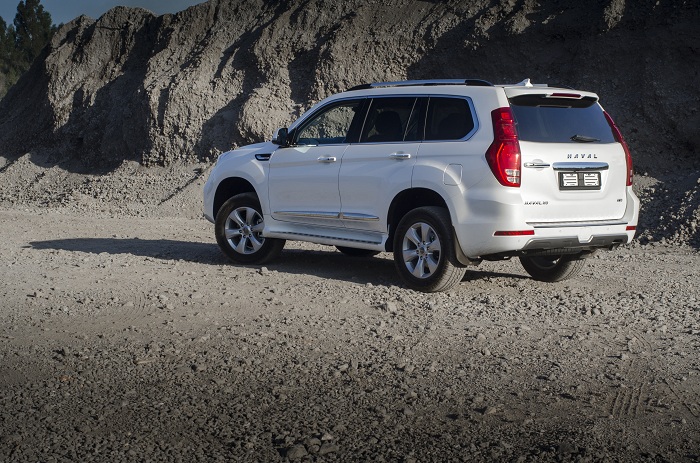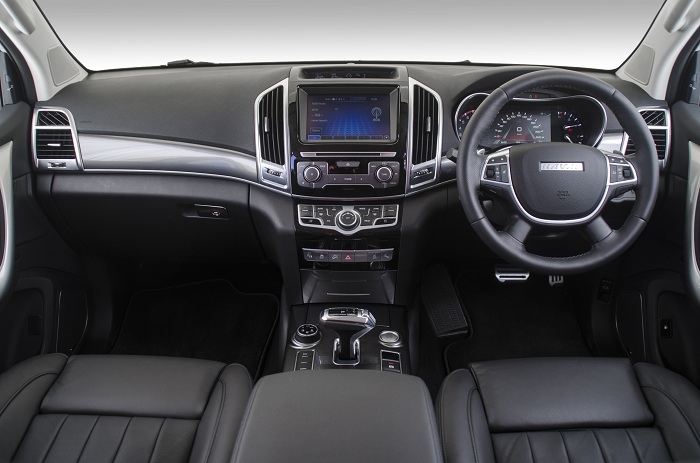After the successful uptake on models such as the H2 and H6 C, the brand has now introduced its flagship model, the H9. I spent a few days behind the wheel of this large seven-seater to see if it makes for a valuable alternative.
Fighting with whom?
The H9, on paper, competes with the likes of the Toyota Fortuner and Ford Everest, however, when it arrived at the Autodealer office, the team and I quickly decided that it appears to be more of a Prado competitor in terms of overall size as well as specification level.

In simple terms, the H9 is big and its bold styling echoes this. The front features an upright grille, large adaptive Xenon headlights with daytime running LEDs and a raised bumper. Measuring less than five metres long and with a wheelbase 200mm shy of three metres, the H9 certainly looks intimidating and apart from a few styling touches resembling the Prado, it looks fairly good overall.
Interior missing for very little
When it comes to the interior of the H9, one can’t help but be impressed. I spent a few days with it and still wasn’t able to uncover all of its standard luxury options. I did however find the controls for the seats which are ventilated, electric and offer massage functionality.
The front passenger seat can even be operated by the driver via controls on the top right side. There is a large panoramic sunroof, an eight-inch touchscreen infotainment system with Bluetooth, USB, satellite navigation and display for the reverse camera, wireless charging, keyless entry/go and a superb sounding 10-speaker Infinity sound system.

Arguably the biggest plus though is that everything feels and looks good. I was expecting that cheap Chinese build quality but instead, I was greeted by what can only be described as a luxurious interior. A seven-inch TFT digital instrument cluster as well as a neatly designed facia definitely proves that the Chinese are very quickly catching up to the rest of the world.
It is also quite spacious and just about everything is electrically operated including the rear seats. The third row offers adequate space for children as most of these seating options do. Rear passengers also get their own climate control panel and the luggage space, with the third row of seats stowed, is 747-liters with the loading being made easier by the fitment of an electric tailgate.
The drive
As for the drive, I can report that I was pleasantly impressed. Not only is the H9 compliant over both tar and gravel surfaces despite its old-fashioned ladder-frame chassis, but it feels composed despite standing 1.9m tall. In fact, I will put my head on the block and say that the ride is more Prado-like than Fortuner.
There is however a rather big curb stone in the H9’s path and one it simply cannot crest. You see, power comes from a 2.0-litre turbocharged petrol engine that produces a seemingly respectable 180kW/350Nm, but factor in that the H9 weighs almost 2.4-tons, matters don’t seem good.
Hooked to a ZF-sourced eight-speed automatic gearbox is that typically smooth and a nice addition to the overall package, the H9 is more of a big cruiser and while it succeeds in this area, once the terrain gets hilly, the comparatively small petrol begins to run-off of steam quickly.
Punch the accelerator harder, the H9’s second biggest issue crops up, in that the fuel consumption goes up. With the six mode driving selector left in Auto, I could not achieve better than 13.0-litres/100km. An Eco mode is offered as a supplement to the other settings, those being Snow, Mud, 4 Low and Sport, but in truth, this makes the H9 feel so lethargic that it becomes borderline irritating.
Things are improved considerably from a driveability standout when you flick the rotary dial to Sport mode, but be prepared for the consumption skyrocketing to around 17-litres/100km, more than what we saw with the new BMW M5.
Off course, the H9 can also do off-roading as evident by said modes, an Eton sourced limited slip rear differential, Borg-Warner low-range transfer case, Hill Start Assist, Hill Descent Control and even Roll Movement Intervention. Ground clearance is however a bit disappointing at 206mm,
Verdict
Overall, the Haval H9 rates as a very impressive product and comes jam-packed with luxury features as standard. It offers impressive comfort both on and off-road, but as mentioned, it is let down by that engine. There is also no diesel option given the preference for petrol engines in China and general unpopularity of oil-burners globally.
The bigger upshot of the H9 though is its price. At R599 000, it outranks the comparable Fortuner or Everest by miles when you look at the specification level, with items not even being offered on a Prado that costs upwards of R300 000 more. If you can look past the engine and fuel consumption, the H9 will be a good option within the segment.
















